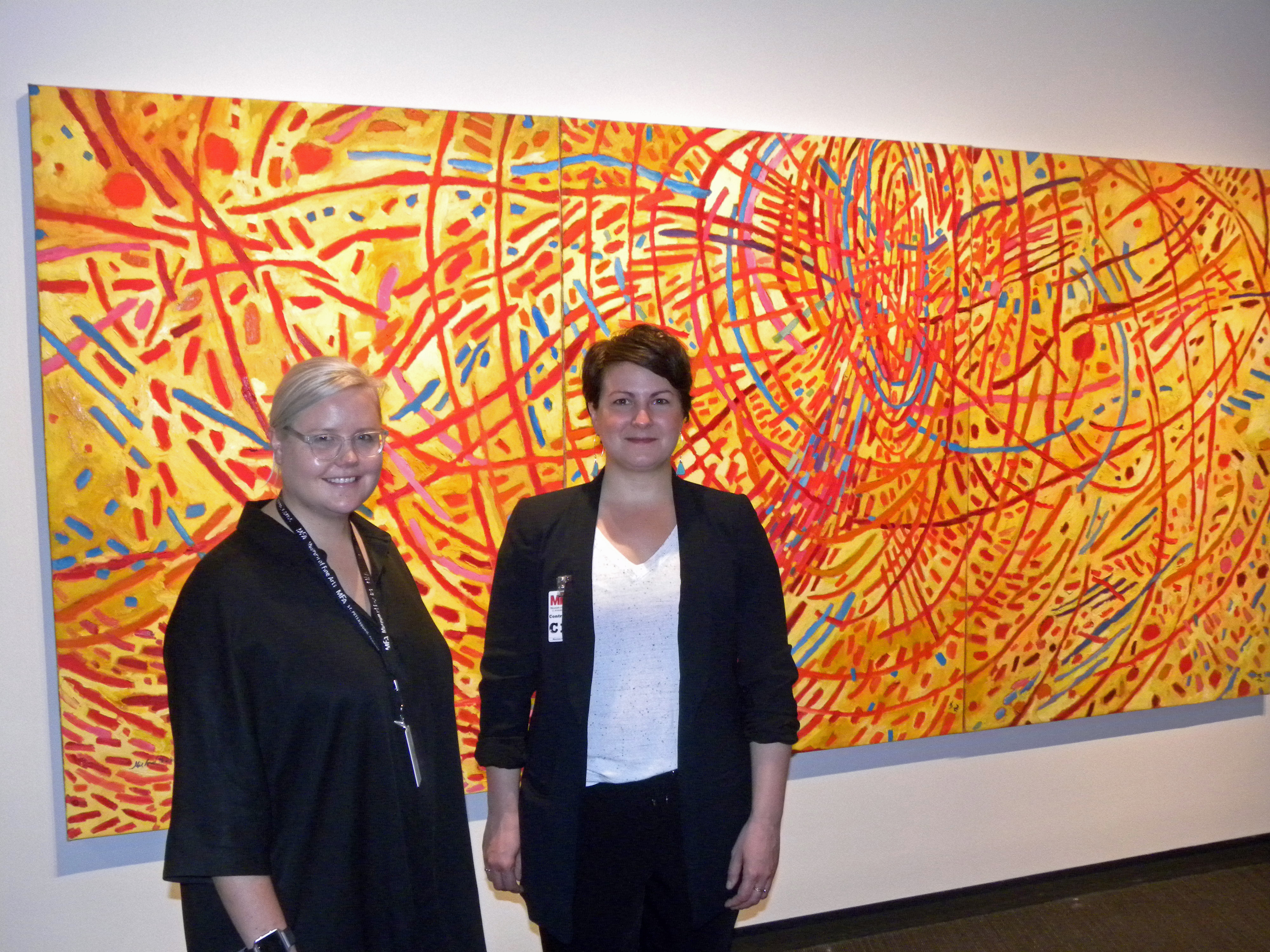Create
New exhibitions – and a visit from Monet – at the Museum of Fine Arts

Two new exhibitions, both opening May 5 at St. Petersburg’s Museum of Fine Arts, couldn’t be more different. While one consists of abstract art in a colorful myriad of media, the other offers up a tight focus on stark black and white photography.
Yet there’s a powerful thread running between them.

Barbara Chase-Riboud, “Malcolm X #13,” abstract sculpture of black bronze, silk, wool, linen and synthetic fibers.
Consisting of 45 works by female African American artists, Magnetic Fields: Expanding American Abstraction, 1960s to Today is a stunning collection of pieces making abstract – but hardly impenetrable – statements about racial and social inequality, frustration and the wobbly way our world sometimes turns.
“This is an exhibition that takes a look at racial and gender disparities,” says Katherine Pill, the MFA’s Curator of Contemporary Art. “But first and foremost, it’s an exhibition about abstraction – it’s about color, form, line. And we’re really excited that it’s also inter-generational. The oldest artist in it was born in 1891; the youngest, in 1981. So it really runs the gamut.”
It’s named after “Magnetic Fields,” a striking triptych by painter and sculptor Mildred Thompson. The Florida-born Thompson lived and worked in Europe for many years, before returning to Tampa as the city’s Artist-in-Residence. “Magnetic Fields” was painted in 1974.
“It’s an incredibly colorful, beautiful, powerful and expressive work,” says Erin Dziedzic of Kansas City’s Kemper Museum of Contemporary Art, where the touring exhibition was assembled. “It really set the tone for how we wanted to move through our dialogue with this exhibition.”

Candida Alvarez, “Black Cherry Pit,” acrylic on canvas.
According to Dziedzic, Magnetic Fields: Expanding American Abstraction, 1960s to Today is on par with the Brooklyn Museum’s We Wanted a Revolution: Black Radical Women, 1965–85 and the Chicago Museum of Contemporary Art’s new show of works by black artist Howardena Pindell, What Remains to Be Seen.
“We’ve been in dialogue with all of these other curators across the country,” she explains, “to make sure our exhibition was part of that conversation, but also stood alone as an impactful way for us to explore artists who had been under-represented – and especially in the field of abstraction.”
Dziedzic and artist Candida Alvarez – represented at the MFA show by a brilliant skewed-perspective painting titled “Black Cherry Pit” – will discuss the goals and significance of Magnetic Fields Saturday (May 5) at 11 a.m. The conversation is free with museum admission.
And on July 28, the MFA expands its vision for this show by bringing in “abstract sonic experiences” by African-American women musicians and performers. Elizabeth A. Baker, Chicago’s Renée Baker and San Francisco-based Pamela Z. Each will perform and take part participate in a panel discussion, from 2 to 7 p.m. (free admission).
Also making its debut May 5 is Can I Get a Witness: Photographs by Herb Snitzer. The 85-year-old Snitzer, now a Tampa Bay resident, has spent over 60 years chronicling American life. Many of his legendary portraits of jazz musicians are on view at the MFA, including striking candids of legends Miles Davis and Louis Armstrong.

Herb Snitzer’s 1959 portrait of singer/songwriter Nina Simone.
“The exhibition focuses on his lifetime commitment for social justice and equality,” explains Robin O’Dell, curator of the museum’s 16,500-image-strong photographic collection. “He considers himself a social documentary photographer, and his has a vast collection of photography. It would have been very easy to fill all these galleries, and still not even put a tiny percentage of his amazing work on the walls.”
From poverty-stained New York street scenes in the 1950s, through the 2017 Women’s March in St. Pete, Snitzer has consistently pointed his lens towards the uphill battles. He has also chronicled the St. Petersburg PRIDE parade since 2006.
Snitzer and O’Dell will be in conversation about Can I Get a Witness Sunday, June 10 at 11 a.m. This talk is also free with museum admission.
Right on the Monet
The MFA welcomes a new visitor this week – it’s “Valle Buona near Bordighera,” a breathtaking 1884 landscape by French impressionist painter Claude Monet.
Monet created the painting during a visit to the Riviera, at the French-Italian border. Visible in the distance is the village of Sasso.
The canvas is on loan from the Dallas Museum of Art, part of a trans-global trade-off. The Dallas museum was one of several planning to exhibit a round-the-world tour of works by Berthe Morisot.

Claude Monet, “Valle Buona near Bordighera,” oil on canvas (1884)
The St. Petersburg Museum of Fine Arts happens to have, in its permanent collection, an 1888 oil by Morisot called “Reading (La Lecture).” So, while that particular painting travels the world, Monet’s “Valle Buona” will spend a year or more in St. Pete.
Visit the St. Petersburg Museum of Fine Arts website here.







